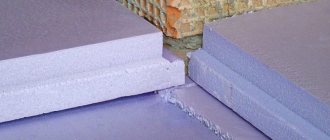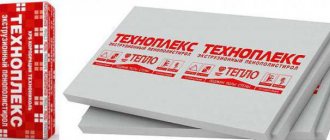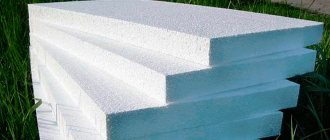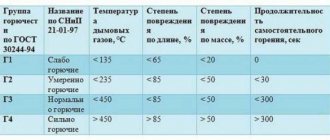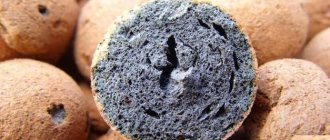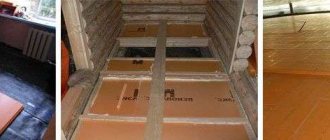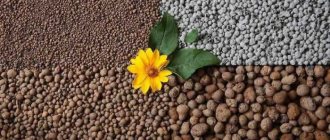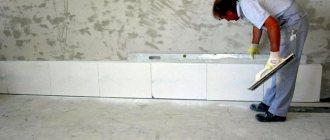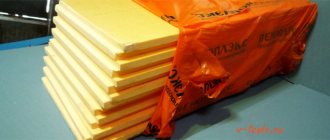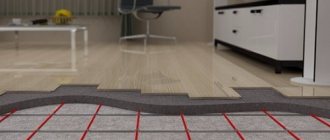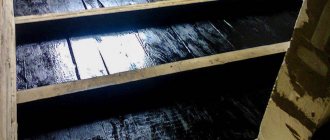One of the most important factors in creating a comfortable environment in a room is considered to be floor insulation with heat-insulating materials. The relevance of this parameter increases under the condition that groundwater runs close to the surface, in the areas of access to outside air, as well as on the border of unheated and heated premises.
Correctly carried out thermal insulation of the floor will allow you to set the proper temperature level in the room and reduce heating costs.
Materials used as heaters must have certain characteristics, including durability, moisture resistance, compressive strength and thermal conductivity. The technology of insulation differs depending on the type of material, the most common are expanded polystyrene, expanded plastic, expanded clay, foam, foam under the screed.
Floor insulation with expanded polystyrene
Expanded polystyrene is a gas-filled material obtained from copolymers of styrene and polystyrene. The styrene granules filled with gas are dissolved in the polymer mass, during the heating of which the volume of the original granules increases many times.
Expanded polystyrene is obtained by sintering granules.
Benefits:
- ease of use - polystyrene foam plates are easily cut with a knife or hacksaw, the material is attached with glue, cement mortar or mounting devices;
- a light weight;
- environmental Safety;
- resistance to chemical and biological influences;
- low cost;
- durability (over 50 years);
- moisture resistance;
- insulation.
Disadvantages:
- thermal deformation, at a temperature of + 80-90 degrees;
- flammability, gas-filled granules can ignite at high temperatures;
- instability to physical damage.
Floor insulation technology on logs
Wooden floor elements are treated with moisture-proof agents and antifungal agents, from the lower side of the logs, sheets of chipboard or boards are attached to self-tapping screws. Pre-cut to size sheets of expanded polystyrene are laid on them, a film is laid on top of the covering, after which the floor covering is laid.
Raise the floor 30-40cm under the screed. Expanded clay, polystyrene, polystyrene foam, polystyrene concrete?
Polyfoam and expanded clay are great for floor insulation, they are easy to install and are quite cheap. To understand which material is better to use in your case - expanded clay or polystyrene, you need to study the features of each of them.
Which material should you choose? In various sources, you can often find warnings and arguments that mineral wool, although it has excellent qualities as insulation, but poses a certain danger to health. Similar warnings can be found about expanded clay. In particular, it is said that, supposedly, after a certain period of time, the expanded granules begin to emit harmful substances. But is it really so? To understand whether this is really so, you need to study the characteristics of the raw materials that make up expanded clay.
Ordinary red clay has the ability to swell when exposed to high temperatures. What, in this case, is harmful to expanded clay, which is a related material to brick? So you can safely use expanded clay for insulation and other construction activities. Another question if you have to think about what is better to choose as a heater: expanded clay, polystyrene or other material.
The fact is that any insulation must be protected from moisture.However, if it suddenly happens that moisture gets into expanded clay, then if a ventilated layer is present, the granules will perform the functions of a kind of drainage, after which the water will evaporate. Polyfoam tends to rot in a wet environment.
Hello everyone! After buying an apartment in "Stalinka" I decided first of all to change the floor, because the old floor creaked and sagged terribly.
The material can turn black, and mold can form on it in literally 1 year. In addition, if a fire suddenly occurs, the expanded clay will not support combustion, and the foam will emit harmful and corrosive substances. Polyfoam is well known for its moisture-resistant and heat-insulating characteristics, in addition, it has a fairly high value of the coefficient of elasticity.
The main purpose of the foam is thermal insulation. On the one hand, a properly designed foam will keep you warm and keep out the cold. On the other hand, it will not allow cooled air masses to penetrate into the room. The technology of insulation with foam and expanded clay requires certain tools. You will need:. Instead of foam, it is quite possible to use expanded clay.
The following tips will help you make insulation more durable and reliable. Expanded clay is often used for floor insulation, and floors, as you know, are constantly exposed to significant loads. In view of this, it is necessary to correctly calculate the size of the expanded clay layer and screed. Expanded clay must be covered on top of a vapor barrier and waterproofing layer. It is necessary that the canvas overlap the wall structures. Height - not less than the thickness of the expanded clay layer.
Expanded clay insulators come in different fractions. It usually ranges from 5 to 20 mm. To ensure greater reliability, you can use expanded clay of 2 fractions at once. The backfill is done according to what is known as wedging. To get a flat surface, you need to bring the level and place the beacons in accordance with the markings made. The first beacon is installed at a short distance from the wall surfaces.
All other elements are parallel. The step is determined by the screed. Warming with expanded clay is a process as effective as it is simple: it can be done independently, even without special skills.
As soon as the beacons are installed in their places, you need to align the position with the building level.
The latter is calculated according to a pre-made mark. Next, it is checked how the lighthouses stand in a common plane, after which the mixture is poured over the lighthouses. When it gains sufficient hardness, you can pour expanded clay. The optimum layer thickness is 10 cm. At a lower value, effective heat retention cannot be guaranteed. There should not be any slope in the backfill. The surface must be strictly flat. The check is carried out using a control measurement.
The distance between the previously installed beacon and the backfill itself is determined.
Expanded clay penoplex
For this, an ordinary tape measure or a special template is used. Before pouring the solution, expanded clay must be treated with cement milk. It will promote the setting of the insulation layer, due to which there will be no movement in the process of feeding the mixture. In order for the screed to function as a whole, mesh reinforcement must be performed. The resulting surfaces will not be afraid of deformation forces.
You can walk on the floor after days. This is how long, on average, the cement slurry is gaining hardness. Strength gains last for weeks. By the way, you can check the strength of the surface in an elementary way. You need to take a regular jar and install it with the neck down.If the inside of the jar becomes covered with condensation, the floor is still damp and cannot be walked on.
You can check without a can by resorting to a simple visual inspection. Areas with high humidity are usually visible even to the naked eye.
Expanded clay and polystyrene are one of the most commonly used materials for floor insulation in a private house. Insulate the floor - to save yourself from a lot of troubles, which over time will necessarily manifest itself in the form of condensation, cold rooms and other problems. Polyfoam is a moisture-resistant and heat-insulating material that has a sufficiently high value of the coefficient of elasticity.
After covering the top layer of the screed with this or that material, we can assume that you have succeeded in insulating the floor of the house for a long period. Are there alternatives to expanded clay? If you think that expanded clay will be too heavy for bulk thermal insulation, you can use other expanded and porous backfills. For example, agloporite, similar in characteristics to expanded clay, is quite suitable - something like pumice with a structure resembling glass. This filler is made from low-melting clays mixed with a charge of coal mining waste and shale, with ash and slag from TPP furnaces.
However, the environmental friendliness of this material is in great doubt. Another good alternative to expanded clay is expanded perlite. It has a lower moisture absorption, but a very good thermal conductivity. Expanded vermiculite can be considered the best option for replacing expanded clay. This material, belonging to the group of hydromicas and obtained from rocks, is environmentally friendly.
If we compare the coefficients of thermal conductivity, then for expanded clay it is 0.1, and for vermiculite - 0.08, which is 2 times less than that of mineral wool.
In the case of using this material, the backfill layer will be thinner, the load on the floor is lower, and the base for the screed is quite acceptable. It takes a lot of effort to make living in a house cozy and comfortable.
Indeed, in this case, it is necessary to provide not only the creation of a beautiful interior in the room and the installation of heating equipment. In order for the operation of the devices to be more efficient and less costly, you need to take care of the thermal insulation of the building in time. There is a large selection of materials for insulation on the market, which differ from each other in the way of installation, price and appearance.
Despite the great variety, experts are increasingly focusing on extruded polystyrene foam and expanded clay. But which of these materials is better? Each of these indicators is due to the chemical composition and size. Therefore, before you buy a certain option, you should familiarize yourself in more detail with the features of the materials. Extruded polystyrene foam is a synthetic-based heat-insulating material.
For its production using high temperatures, polystyrene granules are mixed. Subsequently, a special agent is added to the raw materials. No toxic substances are used for the production of extruded polystyrene foam. It does not emit heavy chemical compounds, therefore it can be used to decorate the house of people who have allergic reactions. During the production, special technologies are used, thanks to which it is possible to make the process of creating materials safer for the environment.
A harmless gas is used that is suitable for recycling. The use of such components allows you to create panels that are successfully used in different areas of the industry. In addition, it is easy and convenient to work with them, and installation of sheets does not take much time. Extruded polystyrene foam has good hygroscopicity.Therefore, it can be installed in rooms with high humidity levels. The panels are designed in such a way that they quickly regain their original shape after heavy loads for a long time.
There are no capillary voids in the structure of the material, which determines the high strength of the panels. In addition, it interacts well with various primers and paints. An exception is products containing organic solvents.
Floor insulation with foam
Polyfoam is considered the most optimal material for floor insulation.
Benefits:
- versatility, the material can be used to insulate wooden and concrete floors, as well as walls, facades, roofs and ceilings;
- ease of installation, laying the foam does not require much effort, no dowels and other elements are needed to fasten it, in some cases the use of glue is allowed;
- thermal insulation properties, in summer it is warm in such a house, and cold in winter;
- environmental safety, the material does not emit toxic and harmful substances into the atmosphere;
- resistance to biological and chemical substances.
Disadvantages:
- fragility;
- cracking under the influence of UV rays;
- fire resistance.
Technology
The process of foam insulation is as simple as possible; it does not require special skills. The density of the foam should be 35 kg / m, the thickness should be 20 mm.
A layer of polystyrene is laid on the concrete cover, free from dust and debris, without gaps.
All crevices and gouges must be pre-filled with filler or construction foam. Foam boards are laid on a polyethylene film in three ways: according to the basic installation, in a diagonal way, in a run-up. In the first case, the sheets are laid in regular rows parallel to the walls, in the second case at an angle of 45 degrees to the walls, in the latter case the angles at the joints of the slabs do not coincide.
With this method of insulation, the foam is covered with a plastic wrap on top, laying a laminate or floor tiles involves laying a PVC membrane on top of which chipboard is placed.
The cement screed is poured onto a waterproofing film, the complete drying of which, depending on the layer thickness, takes 3-4 weeks.
The main types of insulation and their characteristics
Basically, the following materials are used to insulate ceilings in a private house:
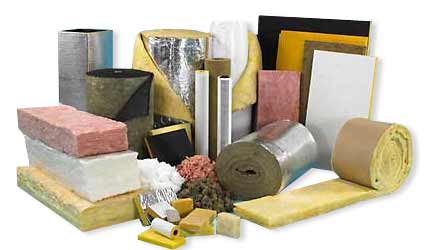
Today on the market you can buy dozens of types of insulation
- mineral wool;
- Styrofoam;
- expanded clay;
- sawdust.
Mineral wool
Benefits of mineral wool:
- despite the fact that this material has a cellular structure, various beetles, worms and other insects cannot start inside it, so that the biological safety position of mineral wool is almost an ideal material; Mineral wool is one of the most demanded heaters
- has increased fire resistance (during a fire, mineral wool will not ignite and will not emit harmful chemicals until the temperature in the room reaches 450C-550C °);
- due to good heat exchange and a minimum level of thermal conductivity, it will be warm in the house in winter and cool in summer;
- ecological cleanliness.
Mineral wool also has its drawbacks:
- porous insulation of any type always lets steam through and, as a result, absorbs moisture (in this case, the quality of mineral wool as a heat accumulator will rapidly approach zero);
- the maximum effective operational life of this insulation is no more than 10 years (a relatively short period);
- high gyroscopicity;
- it may contain binding resins that are not entirely beneficial to health, but this mainly concerns its unscrupulous manufacturers (in direct language, we are talking mainly about Chinese manufacturers).

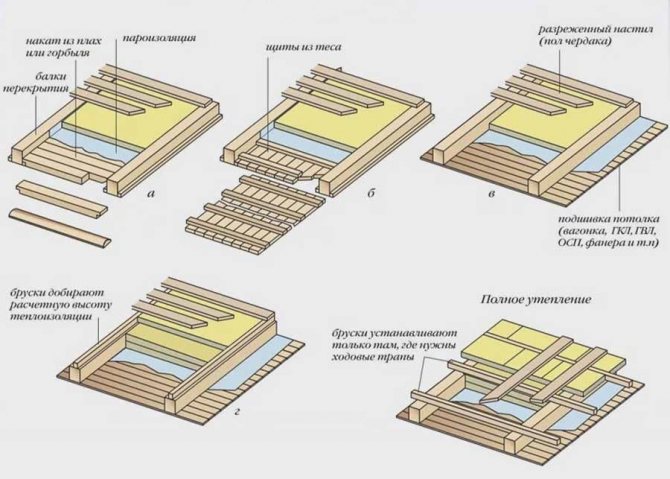
Schematic representation of the insulated ceiling
Styrofoam
The cheapest of all types of ceiling insulation is, of course, the well-known foam plastic (and outbuildings are most often insulated with clay).Despite its cheapness and visually apparent fragility, this material should still be considered as a heater: it has some important positive characteristics.
It is also important to add that expanded polystyrene (this is the official name for foam in the construction industry) is often used in conjunction with other thermal insulation materials (especially when it comes to ceilings - not only in the house, but also in the garage).
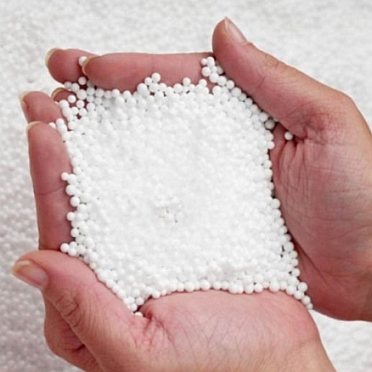

Polyfoam is one of the cheapest materials
The advantages of foam as insulation include the following:
- this material is completely indifferent to moisture and can be used indoors in just a colossal level of humidity (up to 99%);
- mold cannot form in it (and on it) a priori, since the material is completely resistant to fungi of various origins;
- cheapness (a ton of polystyrene in cost does not even reach $ 100 - this amount is enough for the whole Shaherizada palace, and not just for an ordinary house, roof, attic or roof);
- lightness (practically does not bear additional load on the floors and foundation of the building);
- long service life;
- can withstand serious temperature changes (from -65C ° to + 50C °), which makes it possible to use it in the Far North and in the southern regions of Russia.
Of course, expanded polystyrene has its own disadvantages:
- minimum mechanical strength (the smallest force is enough to pierce the foam or deform it - this is known to everyone from infancy for sure);
- expanded polystyrene has an air permeability coefficient of 10% - this is negligible (the material practically does not allow air to pass through - it will be cool in the room in winter and hot enough in the warm season, which is not entirely good);
- easily destroyed under the influence of furniture varnish and paints made on the basis of nitroglycerin (modern facade paints contain it in large quantities, with the exception of oil and epoxy).
In general, we can conclude that foam is an extremely cheap material that is easy to install with your own hands, but still not an effective insulation (especially for houses made of foam blocks).
For a temporary dwelling, it is suitable (a summer residence, for example), but for a permanent one, it is better not to use it anyway (technology often simply does not allow it).
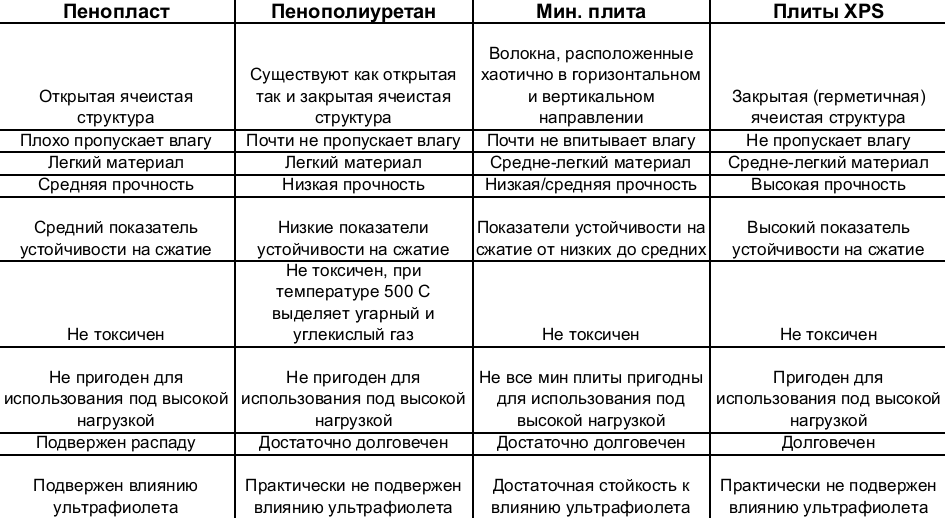

Table with the characteristics of some types of insulation
Expanded clay
Among the advantages of this material, one can single out an extremely low coefficient of thermal conductivity, ease of installation, high sound-insulating and noise-absorbing properties. By the way, noise and sound are completely different things, although many do not understand this (and after all, manufacturers of building materials classify them differently).
Expanded clay is divided into several types, depending on the size of the fractions
Expanded clay also has disadvantages: a porous structure and extreme fragility (a particle of expanded clay can be crumbled into powder by literally pressing the little fingers of both hands).
The process of insulating the ceiling with expanded clay
- The ceiling is completely cleaned, dust, dirt, old coating and insulation, if any, are removed from it (reviews in this regard are positive);
- The waterproofing is being laid. The thermal insulation film is always and under any circumstances mounted exclusively with an overlap, the joints are connected not with glue, as when laying any other types of insulation, but with special tape (expanded clay is very much afraid of any moisture - the use of liquid must be minimized). The waterproofing film itself must be applied to the wall within 8-10 centimeters.
- Expanded clay is poured (here it is necessary to take into account the shrinkage of the ceiling surface, especially in a wooden house). By the way, the expanded clay layer should be at least 15 centimeters, in this case - the larger it is, the better the physical properties of the thermal insulation will be;
- Leveling plaster is applied (but if you insulate the floor, you will need to make a screed - this is a note to the builder).

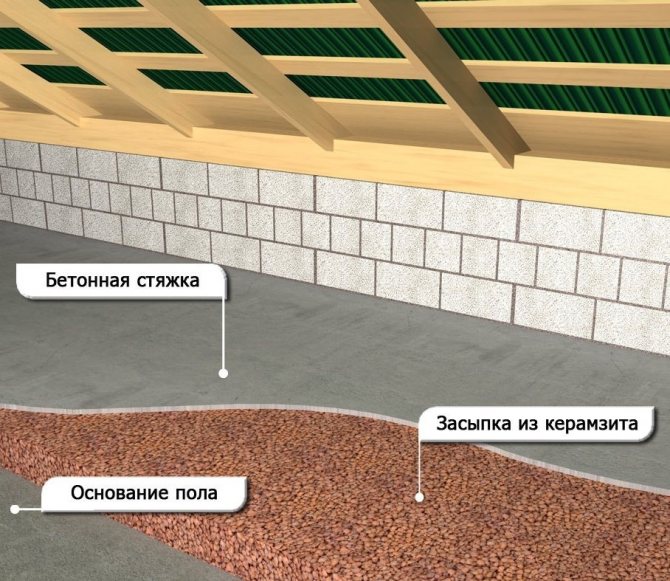
Laying of expanded clay under the screed
Sawdust
Sawdust has been used as a heater for a very long time. Strictly speaking, they have only 2 main advantages: low cost and good thermal insulation properties.In simple terms, we can say the following: to insulate the ceiling with sawdust is a more correct solution when compared with expanded clay, however, in terms of their technical qualities, they are noticeably inferior to foam and mineral wool. Sawdust just like that, from a bay-flounder, should not be used in any case.
They must meet the following criteria:
- be aged for one year (the content of wood resins and gluten should be no more than 10% -12%, which is impossible in fresh material); The smaller the sawdust fraction, the more saturated they are in color
- it is not allowed to use sawdust even with a minimum moisture content (they simply crumple up, and various insects and other “living creatures” will subsequently start on the ceiling);
- they should be free of mold and mildew (for example, they can appear if the sawdust was first wet, and then they were dried for a long time - this is sometimes what unscrupulous manufacturers do);
- The size of the sawdust should be medium - too small sawdust requires a larger amount of insulating layer, that is, putty or cement screed.
Thermal insulation of the floor with expanded clay
Expanded clay is an environmentally friendly insulation, the material is a lightweight porous material obtained by quickly firing low-melting clays. Expanded clay consists of round or oval granules of different sizes.
Benefits:
- ease of installation;
- affordable cost;
- energy efficiency;
- soundproofing;
- resistance to temperature extremes;
- frost resistance;
- water absorption;
- environmental friendliness.
disadvantages
- fragility;
- the thickness of the insulating layer imposes restrictions on the use in rooms with low ceilings.
Technology
Expanded clay can be used to insulate concrete and wood floors.
After cleaning from dirt and dismantling the old floor covering, a layer of waterproofing is laid. The installation of the thermal insulation film is overlapped, the joints are glued with special tape. It should be borne in mind that the film should go behind the wall at a distance of 8-10 cm.
At the next stage, expanded clay is filled up, while shrinkage must be taken into account. The thickness of the thermal insulation layer should not exceed 15 cm; expanded clay of different fractions is used for backfilling. At the final stage, a leveling screed is applied.
In the process of floor insulation, it is necessary to take into account the loads; the energy efficiency and bearing capacity of the floor depend on the thickness of the expanded clay layer. A layer of 15 cm provides an adequate level of thermal insulation, but the floor may not withstand dynamic and static loads.
Expanded clay - backfill insulation
Lightweight, porous material in the form of small granules is called expanded clay. It is obtained by firing low-melting clay rocks. Depending on the fraction of granules, expanded clay can be of the following sizes: 5–40 mm.
Its airy and porous structure helps to keep heat in the floor and on the loggia for a long time. Expanded clay is one of the most refractory and safe materials. The sequence of warming the floor of the loggia with expanded clay:
- A rough base is being prepared - the old casing, debris, fasteners are removed, all the cracks are blown out.
- Before insulating the floor surface, it is covered with waterproofing - a dense plastic film, preferably with a continuous sheet, but if there are joints, then they are glued with construction tape. The edges of the film are brought onto the walls to such a height that it exceeds the thickness of the expanded clay layer.
- It is better to insulate the loggia by installing a longitudinal frame made of wooden slats or a metal profile 10 cm high. In order for the lathing to be even, it must be placed along the beacons that determine the horizontal plane of the plane. Lighthouses are made of steep cement-sand mortar (1: 2).There is no need to make transverse logs, because the floor of the loggia is usually no more than a meter wide.
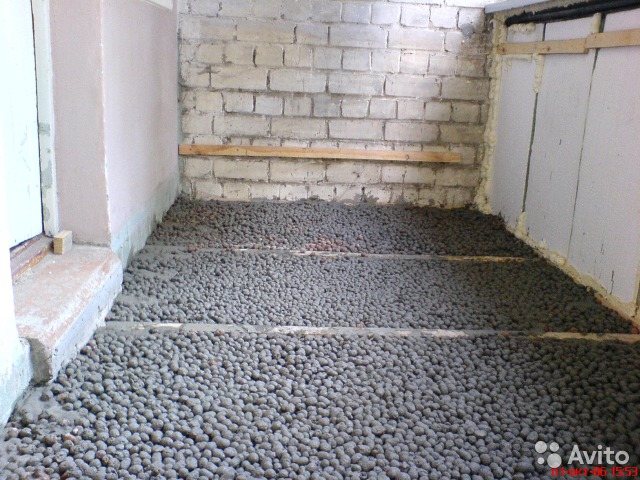

- The empty cells of the frame are backfilled with expanded clay. The thickness of its layer should be 7 cm, the remaining 3 cm of the lathing will be required to fill the screed. The insulation is evenly distributed over the entire area with hands, a level or a spatula. The evenness of the expanded clay layer is determined by the stretched fishing line along the beacons. It is better to insulate the floor if the expanded clay used is of a different fraction. The largest granules are poured down, the smaller ones are on top. Such a structure will not lead to subsidence, the appearance of cracks on the screed, will increase the strength, density of the floor due to the compaction of the lower coarse-grained layer with a smaller one.
- If desired, the future floor is reinforced with a metal mesh. It minimizes any deformation and prevents damage to the fill.
- A cement screed with a thickness of at least 5 cm is applied to the expanded clay layer neatly, in small portions, to ensure evenness, prevent potholes, not to destroy the expanded clay structure and insulate the floor with high quality.
Advice: the concrete screed gains its strength and final hardening after 28 days. After this period, any floor covering can be mounted on top of the fill. It is not recommended to do this earlier, because non-evaporated moisture from concrete will remain in expanded clay and screed, which will lead to gradual deterioration of the floor. You can walk on a cement base a day after pouring.
- Instead of a cement screed, GVLV can be used, which are installed immediately on the crate, and covered with laminate and linoleum on top.
Summing up, we can say that it is easier and more convenient to insulate the floor of the loggia with Penoplex, because, unlike expanded clay, it will not need to be carried in buckets and exhaustingly covered with waterproofing. Penoplex slabs are not heavy, they are easily attached to the rough surface, they are not much more expensive than expanded clay, and their thermal insulation properties are in no way inferior.
Floor insulation with penoplex
Penoplex is a versatile material that can be used to insulate all elements of buildings. It is ideal for insulating the first floors of basement buildings.
Benefits:
- high thermal insulation properties;
- uniform structure;
- low level of thermal conductivity;
- compressive strength;
- boards are easily glued and cut;
- long service life;
- ease of installation;
- affordable cost.
Disadvantages:
- low level of vapor permeability;
- fire hazard;
- susceptibility to rodent attacks.
Technology
This option is supposed to be used for insulating wooden houses on a columnar foundation. The material is laid on the ground, in the gap between the logs and the ground surface. The process of warming consists of several stages, if the insulation is carried out not in a building under construction, but in a residential one, all old boards are removed and, if necessary, replaced with new ones.
At the next stage, the installation of the lags is carried out, the installation of the first bar is carried out at the building level, after which another bar is installed from the opposite end. A strong thread or fishing line is pulled between the logs, after which the remaining bars are installed. A waterproofing film is laid on the logs, the edges of which should reach the middle of the log.
Fastening of waterproofing to the beams is carried out using a construction stapler. Foam plates are laid on top of the film, to retain heat in the room, the material is staggered, all seams are filled with polyurethane foam. The composition of the polyurethane foam should not contain toluene, as it has a destructive effect on the penoplex.
After filling the seams, the material is attached with construction glue or dowels to the logs, boards are nailed over the insulation.
How to insulate the floor in a bath with penoplex
Penoplex is not recommended for warming the ceiling of a steam room due to high temperature exposure. However, they often insulate the roof of the bathhouse, especially if the attic space is used or adapted for an attic.
For high-quality insulation of the bath roof with penoplex, we adhere to the following instructions:
- We fix the vapor barrier membrane with an overlap of 15 cm and glue the joints with sealing tape.
- We fill the crate and lay the penoplex between its elements. We keep a safe distance to the chimney.
- We attach an overlap geotextile on top.
- We install the counter battens and finishing roofing material.
Do not forget to treat all wood with fire retardants and antiseptics before starting work. Penoplex must also be impregnated with fire-fighting compounds.
Correct use and correct installation will ensure reliable thermal insulation of the steam room. Moreover, you can carry it out with your own hands, even without building skills. Most importantly, keep in mind that it is not recommended to insulate the walls of the bath from the inside with penoplex. The material begins to emit toxic vapors already at 75 degrees.
Thermal insulation of the bath with penoplex The peculiarities of the operation of the penoplex and its technical characteristics must be taken into account if you decide to insulate your steam room with it. For thermal insulation of a log house, this is not the best option, however, it is very convenient and profitable to insulate brick and panel baths for them.
- Advantages and disadvantages of penoplex
- Features of the thermal insulation of the bath
- Insulation of the strip foundation
- Thermal insulation of the bath base
- Thermal insulation of the floor in the bath
- Thermal insulation of walls
- Insulation of the ceiling and roof
Recently, penoplex (extruded polystyrene foam) is gaining great popularity among synthetic thermal insulation materials.
It is made by forcing molten plastic foam using a special molding nozzle (nozzle).
Under the influence of high temperature and pressure, the structure of the material becomes finely porous with isolated cells of 100-200 microns in size. Due to this, it is distinguished by its strength and high thermal insulation properties.
The Russian bath does not lose its popularity, and at the same time it must be built in compliance with the relevant rules and regulations. Therefore, the question of what can be used to insulate the bath remains very relevant.
Competent thermal insulation of the bath will help to significantly reduce fuel costs, improve the quality of the procedure, and keep the building itself in good condition for a long time, especially if the bath is used all year round.
For a long time, Russian baths were insulated using natural materials - moss, tow, bast, etc. At present, it is better to use artificial insulation. They are durable, easy to install, and environmentally friendly.
When choosing a heater, it is necessary to take into account the peculiarities of using bath rooms - a high level of moisture, high temperatures, often live fire. All these points impose certain requirements on heaters for a bath, especially if they will be used for internal insulation.
Whether it is necessary and possible to insulate the bath outside depends on the material from which it is built, the regional climate and the time of use - seasonal or year-round.
In order to carry out the thermal insulation of the bath yourself, you must prepare the following set of tools:
- construction tape;
- screwdriver;
- building level and plumb line;
- ax;
- chisel;
- saw or hacksaw;
- a hammer;
- jigsaw;
- nippers or pliers;
- sharp technical knife;
- electric drill or hammer drill.
In addition to the insulation itself, you will need to work:
- vapor barrier film;
- wooden beam;
- metal rail;
- screws and nails;
- adhesive tape.
The bath usually has: a dressing room, washing rooms, a steam room, a dressing room, a relaxation room.In these rooms, different levels of humidity and temperature are set during washing. Therefore, what can be used to insulate the bath inside is determined for each room separately.
According to their mechanical characteristics, heaters are divided into bulk, block and tile, masterbatch and fibrous materials.
The chemical composition makes it possible to divide heat insulators into organic, inorganic, technical and plastic materials.
We suggest that you familiarize yourself with: Foil insulation: for walls with foil, thermal insulation, which side to lay
Heat insulators on a plastic basis are best used for insulating rooms with low moisture and temperature levels. They are not used in the steam room due to their flammability and deformation when heated. Cheap and safe organic heat insulators can be used in the steam room only after treatment against fire.
The most practical are inorganic heat insulators. These materials are fire-resistant, non-hygroscopic. They do not rot and can serve for a long time without losing their basic technical properties.
The most successful vapor barrier for all areas of the bath is aluminum foil. It is fireproof, durable, non-hygroscopic. The main advantage of aluminum foil is the ability to reflect heat. By using such a vapor barrier in a bath, you can significantly reduce the consumption of fuel material.
Glassine, as well as roofing felt in the steam room, cannot be used, since these materials, when heated, emit volatile toxic substances. In some versions, glassine can be used as insulation. It is better not to use roofing material for this purpose at all.
The choice of insulation and the method of its installation depend on the material from which the bath is built. If the bathhouse is built of timber, a cellular lathing made of beams is first mounted on the load-bearing walls. The cross-section of the timber should be 0.2-0.3 cm more than the thickness of the heat insulator. This will ensure the safety of the insulation and its useful properties.
The selected heat insulator is placed between the battens of the lathing. It is covered with a vapor barrier material. The vapor barrier is stacked with a shift. A thin metal rail is mounted on top of the joints. Between the insulation and the vapor barrier, a gap of no more than 3 cm must be left.
Room corners, pipes, window and door openings are sealed with a special vapor barrier tape. This will protect problem areas from moisture penetration.
For finishing, in this case, it is easier to use a lining board. It is stuffed over the vertical crate.
Bath buildings of panel or frame type are insulated only with heat insulators having a low specific weight. Before use, they are treated with milk of lime to protect against corrosion and increase fire resistance. After processing, the material must be thoroughly dried.
We insulate the steam room
The steam room in the bath requires special attention. After all, it is here that the highest moisture level and elevated temperature are observed during operation. Therefore, insulation, waterproofing and finishing of this room must be done with special materials.
The ceiling of the steam room is exposed to maximum heating during operation (up to 150 ° C). Therefore, the question of what can be used to insulate the ceiling of the bath is solved by using materials with high temperature resistance.
In the absence of an attic or attic, the insulation is mounted in the following order:
- wooden lattice from a bar on the ceiling boards;
- cladding elements;
- thermal insulation;
- vapor barrier.
In the presence of an upper room - an attic, an attic - the insulation scheme looks somewhat different. A layer of clay is applied to the ceiling boards, at least 2 cm thick. This will ensure moisture retention. All small holes, joints between boards, etc. are filled with bulk material.Usually expanded clay or chips are used for this. The thickness of this layer is at least 20 cm.
A box-shaped base of rafter supports is mounted on the ceiling around the chimney. This will provide a 20 cm gap between the pipe and the heat insulator required by fire safety. A non-combustible heat insulator such as glass wool or mineral wool is placed inside the box. The main surface of the ceiling is covered with a layer of mineral heat insulator.
Useful Tips
The walls and ceiling of the sauna building must be insulated according to the following principles:
- Heat insulators should be in close contact with the wall surface to reduce the risk of internal moisture and cold air ingress.
- On top of the insulation, a ventilation gap is required to dry it.
- All floors and other wooden elements must be treated with an antiseptic compound to prevent premature destruction of the material.
- Materials with a low level of thermal and moisture resistance cannot be used in the steam room.
- Insulation materials should be chosen from among those that do not deform under the influence of moisture and high temperatures and do not emit hazardous chemicals.
Necessary properties of heaters for a bath:
- heat resistance;
- moisture resistance;
- environmental friendliness;
- Fire safety.
Natural heaters require special processing before use. Otherwise, mold, fungus and harmful insects may soon appear. In this case, it is more expedient to use artificial insulation.
Many home craftsmen are interested in whether it is possible to insulate the bath with foam. After all, it is a relatively inexpensive and easy-to-use material. However, it should be said that the bath can be insulated with foam plastic from the outside or along the foundation.
On the question of whether it is possible to insulate the bath with foam from the inside, most experts will answer negatively. This is due to the fact that the foam is easily destroyed under the influence of high temperatures. The low moisture resistance of this material causes it to rot when exposed to high humidity. Therefore, for the interior of the bath, polystyrene can be used only in rooms where moisture almost does not get.
The question of whether it is possible to insulate the bath with mineral wool is usually resolved positively.
After all, mineral wool is an almost universal modern insulation, which has many positive technical characteristics. Among them are:
- reliability;
- moisture resistance;
- heat resistance;
- fire safety;
- not susceptible to decay;
- simple installation.
Floor insulation with foam plastic under the screed
Polyfoam is considered one of the most common insulation materials, the material is widely used to insulate not only the floor, but also walls and foundations.
Benefits:
- ease of installation;
- low consumption;
- no need for vapor barrier;
- long service life;
- resistance to microorganisms.
Disadvantages:
- ease of ignition;
- significant harm from rodents.
Technology
The insulation process consists of several stages.
All cracks and dents are removed on a surface cleaned of dust and dirt; for this purpose, construction foam, putty or concrete are used. A prerequisite is that the floor must be perfectly flat, the level of thermal insulation depends on the density of the foam plastic to its surface. If this condition is not observed, so-called "cold bridges" are formed on the floor, which can significantly reduce the effect of insulation.
At the next stage, waterproofing is laid, which is most often used as ordinary polyethylene. To increase the tightness of the flooring, the joints are glued with tape, after which the insulation is laid. In this case, a foam of a certain brand and density is used, the thickness of which should be 5 cm.
Next, the outer layer is reinforced with a screed 1.5-2 cm thick, on top of which a reinforcing mesh is laid. At the final stage, the construction concrete mixture is poured, the layer should be 5-6 cm.
Styrofoam, expanded clay or penoplex: make a choice
In addition, this insulation can be varnished and used as the floor covering itself. Insulation with expanded polystyrene containing a layer of foil is not always suitable, but only when installing wooden floors or installing a heating system in the floor.
The bottom line is that the foil not only does not let heat through, but reflects it and sends it back into the room. It is for this reason that it makes no sense to lay such insulation under the floor screed.
So, we examined the main methods of floor insulation in different rooms, learned about the areas of application of materials, not all of which are mounted in the floor screed. Now you can weigh all the pros and cons and make the final choice.
It takes a lot of effort to make living in a house cozy and comfortable. Indeed, in this case, it is necessary to provide not only the creation of a beautiful interior in the room and the installation of heating equipment. In order for the operation of the devices to be more efficient and less costly, you need to take care of the thermal insulation of the building in time.
There is a large selection of materials for insulation on the market, which differ from each other in the way of installation, price and appearance. Despite the great variety, experts are increasingly focusing on extruded polystyrene foam and expanded clay. But which of these materials is better? Each of these indicators is due to the chemical composition and size.
Therefore, before you buy a certain option, you should familiarize yourself in more detail with the features of the materials. Extruded polystyrene foam is a synthetic-based heat-insulating material. For its production using high temperatures, polystyrene granules are mixed. Subsequently, a special agent is added to the raw materials. No toxic substances are used for the production of extruded polystyrene foam.
It does not emit heavy chemical compounds, therefore it can be used to decorate the house of people who have allergic reactions. During the production, special technologies are used, thanks to which it is possible to make the process of creating materials safer for the environment.
A harmless gas is used that is suitable for recycling. The use of such components allows you to create panels that are successfully used in different areas of the industry. In addition, it is easy and convenient to work with them, and installation of sheets does not take much time. Extruded polystyrene foam has good hygroscopicity. Therefore, it can be installed in rooms with high humidity levels. The panels are designed in such a way that they quickly regain their original shape after heavy loads for a long time.
There are no capillary voids in the structure of the material, which determines the high strength of the panels. In addition, it interacts well with various primers and paints. An exception is products containing organic solvents. The material behaves well when exposed to low temperatures and with a sharp change in performance.
An equally important characteristic is biostability. Extruded polystyrene foam does not affect fungi and insects. Also, the material is highly resistant to fire. In addition, it prevents the spread of flame to other areas of the building. This property of the insulation favorably distinguishes it from other options. Extruded polystyrene foam interacts well with various building materials.This allows it to effectively fight corrosive processes.
It becomes more resistant to mechanical damage, which has a positive effect on the life of the created coating. Experts note that extruded polystyrene foam is a reliable, safe and high-quality material. It is used for thermal insulation of buildings with different purposes.
The active use of the material is due to a number of positive characteristics: The material has a wide range of applications. Most often it is used to insulate buildings. These are granules of small size and low weight, which is achieved due to the presence of characteristic pores. Voids are created during the firing process. As a result of such processing, the output is a material that has a number of positive characteristics, including:
The products are environmentally friendly, as the main material for manufacturing is clay. Expanded clay retains its quality indicators for a long time. For 50 years, this material will keep your home comfortable and warm.
It is highly resistant to chemicals. Therefore, it is used in a variety of cases. The main advantages of expanded clay include its low cost, which is beneficial for customers. But for such a favorable price, the rollers of the premises will have to pay with the precious area of the backyard territory. In the process of insulation, it is necessary to build a structure 50 cm wide around the entire perimeter of the wall to be insulated.
In addition, expanded clay is not suitable for rooms with high dampness. After all, it absorbs moisture well and, upon contact with it, loses its operational properties. In such cases, the use of expanded clay is impractical.
The material has a narrower range of applications. It is used to insulate floors, ceilings and roofs. Considering the characteristics of each option, we can conclude that extruded polystyrene foam wins. After all, it has the best performance characteristics, does not take up much space when performing thermal insulation work, and also differs in a wider field of application.
The main method of thermal insulation is floor insulation under the screed. When insulating under a screed, it is very important to choose the right heat insulator.
So, what is this expanded clay in terms of structure?
Insulation materials such as expanded clay, polystyrene foam, mineral wool, penoplex and polyurethane foam are most often used as insulation for the installation of a heat-insulating layer for applying a screed. You can also install a floor heating system, which can be infrared, electric or water. Expanded clay is a highly environmentally friendly, refractory material. Foam granules are characterized by high porosity, which increases the water absorption of the material, in addition, expanded clay is a fragile insulation, therefore, the expanded clay thermal insulation layer should be backfilled carefully.
In order for the floor to withstand significant loads, the thickness of the expanded clay layer must be at least 15 centimeters. This thickness entails an increase in the floor level, therefore expanded clay is not used to insulate rooms with low ceiling heights.
The expanded clay heat-insulating layer should be carefully insulated from moisture penetration, and the structure must be additionally reinforced before applying the concrete screed. Mineral wool has high sound insulation properties. Due to the high hygroscopicity of the insulation, the mineral wool heat-insulating layer must be completely isolated from contact with moisture.
Before installing mineral wool mats, it is necessary to remove the old floor covering, clean the floor from existing dirt, cover up cracks and crevices, then lay a waterproofing film, mineral wool mats and a vapor barrier membrane.Clamps are installed on top of the structure in order to provide the necessary ventilation gap, and a reinforcing mesh of 3 mm wire is mounted on top of the clamps.
A leveling concrete screed is applied over the reinforcing mesh. If significant static and dynamic loads will not act on the floor, then the concrete screed can be lightened by adding expanded clay to it.
Polyfoam and penoplex under the floor screed
Penoplex is a polymer insulation, the structure of the material is closed cells. It is thanks to the structure of the foam that the insulation has high moisture-repellent properties and has a high compressive strength. In addition, the material is fireproof, which makes it possible to use a heat insulator for insulating wooden floors.
As a floor covering, you can use linoleum, tiles, laminate and other finishing materials. Before laying the insulation, it is necessary to thoroughly compact the soil, pour a layer of rubble and make a sand cushion.
Topic in the section "Warming of houses and cottages. Thermal insulation of walls ", created by user FedorL, Login or register. Construction forum VashDom.
Foam sheets are laid on the base prepared in this way. It is necessary to lay the insulation in a checkerboard pattern, and glue all the joints between the heat-insulating plates with tape. A waterproofing film is mounted on top of the heat-insulating layer and a reinforcing mesh is mounted, which ensures the floor's resistance to dynamic and static loads.
On top of the structure, a layer of leveling screed is applied, the thickness of which should be 4 centimeters. After the screed has dried, the floor covering is laid.
Before pouring the screed, create a temperature gap. Liquid heat insulator polyurethane foam is an ideal insulation for floor insulation, as it is sprayed directly onto the insulated surface and does not require additional creation of steam and waterproofing layers. Among all thermal insulation materials, polyurethane foam has the lowest coefficient of thermal conductivity, which allows you to spray a thin layer of insulation, significantly saving the usable area of the room.
Polyurethane foam has all the properties that are necessary to ensure high-quality thermal insulation of the floor. It is fireproof, environmentally friendly, chemically and biologically inert, and has high sound and moisture repellent properties.
The high strength of the polyurethane foam layer allows you to apply a leveling screed to it without laying a reinforcing mesh.
Insulation spraying technology makes it possible to quickly and easily insulate surfaces of even very complex configurations. The polyurethane foam heat-insulating layer hardens within hours. Immediately after the thermal insulator hardens, you can start applying the leveling screed. Saving heat in the house is currently an urgent task. Therefore, the task of reducing these losses is important. The solution to this problem is to insulate the floor before making the screed.
Expanded clay has a number of positive properties - fire resistance, environmental friendliness, relatively low weight. The material is quite fragile, therefore, care and accuracy are required when filling under a future screed. Broken granules lose their thermal insulation properties. In rooms with low ceilings, the use of expanded clay cushion will increase the field level by at least 15 centimeters.
Floor insulation with polyurethane foam
Polyurethane foam has recently been used more and more often for floor insulation, despite its rather high cost. The costs are fully paid off due to the absence of costs for waterproofing and vapor barrier coating, lathing of surfaces and additional installation work.
Benefits:
- durability (from 50 years);
- speed and ease of installation;
- moisture resistance;
- safety;
- lack of "cold bridges".
Disadvantages:
- the need for protection from sunlight;
- the need to use additional equipment and workwear.
Technology
Polyurethane foam is sprayed onto a surface previously cleaned of dust and dirt in an even layer. The method allows you to create an integral layer without cracks and gaps, provides surface insulation of the most complex configuration.
Pros and cons of penoplex
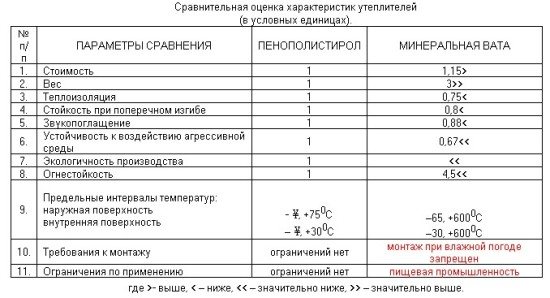

As a conclusion from the above, we can formulate positive qualities of the material:
- It does not soak in water and does not absorb it at all, that is, not only does not need additional water or steam protection, but it itself can serve as such.
- Designed for use in a wide temperature range - from -50 to + 75 ° C.
- It is able to withstand significant mechanical loads without destruction, the impact value of up to 4 kilograms per square centimeter is critical for it. For comparison, for foam plastic, this indicator does not exceed 0.5.
- Ease of use due to high machinability.
- Long - up to 50 years - service life.
Negative factors in relation to penoplex, one can consider:
- It is more expensive than other types of insulation materials, its price is comparable only to mineral wool.
- The material collapses under the influence of direct sunlight, therefore, it is not necessary to tighten the finishing of the insulation layer. Of course, this only applies to surfaces illuminated by direct sunlight.
- Penoplex (and polystyrene) is very attractive for house mice; when using it, you need to think about protection from these uninvited guests.
- Performance claims about the incombustibility of polystyrene foam are easily destroyed by an ordinary lighter. Its inclusion in the group of actively combustible substances (G4) is completely justified.
Floor insulation with penofol
Penofol is a multi-layer material of the class of reflective insulation, consists of a base layer and polished foil. Polyethylene foam of different thickness, structure and density is used as a base.
Benefits:
- environmental friendliness;
- no need for additional vapor barrier;
- soundproofing;
- ease of installation;
- fire safety;
- ease of transportation;
- inaccessibility for rodents.
Disadvantages:
- softness;
- complexity of installation;
- use as additional material.
Technology
The material is laid over the entire surface of the floor covering with the metal side up. A 20-millimeter air gap is created in front of it, all joints formed during the installation process are provided with reliable tightness.
Aluminum adhesive tape is excellent for this. On top of the insulation, a material is laid to ensure the hardness of the base. Hardboard is considered the best option in this case; any floor covering can be used as a finish.
Thermal insulation of the floor with ecowool
Ecowool is made from natural materials, 20% it consists of waste paper, 20% - from natural additives. Cellulose fibers are used as a base, boric acid and lingin are the binder.
Benefits:
- environmental friendliness;
- low thermal conductivity;
- fire safety;
- restoration of thermal insulation properties after drying.
Disadvantages:
- high price.

